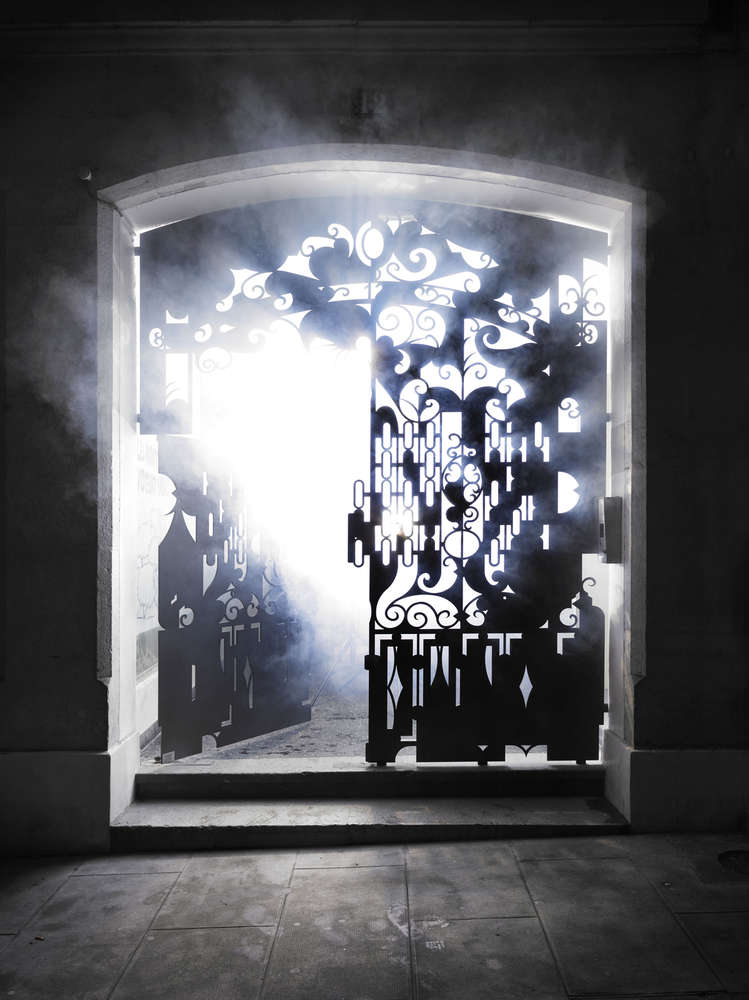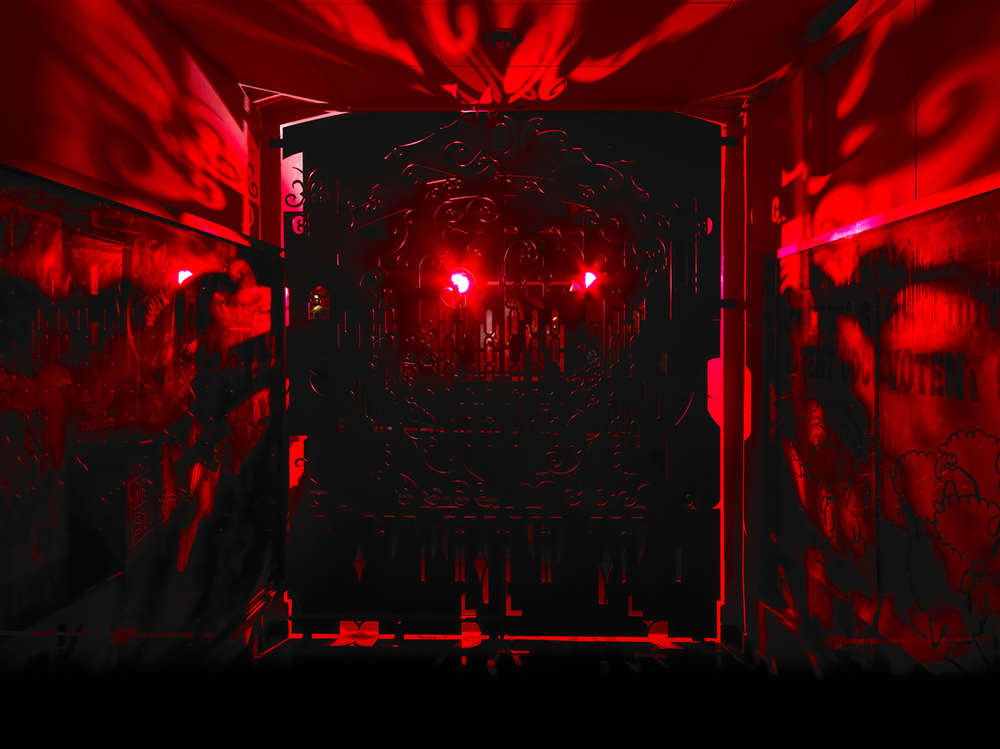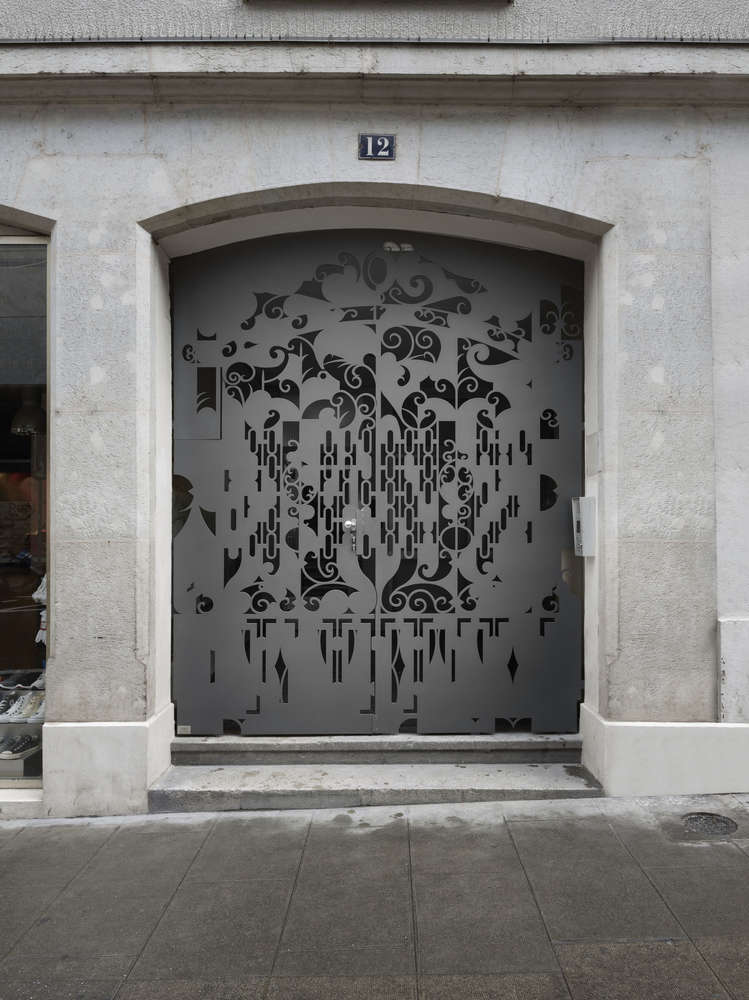Confronting the conservative city regulations of this historical neighborhood, the portal tries to address notions of classicism and contemporaneity. Manipulating a stereotyped pattern borrowed to a traditional blacksmith, the design plays with the question of modern craftsmanship and confronts vernacular references with our own 2012 culture.

During the short process of this design, a belief in the utopian decoration claimed by William Morris emerged. This modest intervention tried to demonstrate the pleasure of designing and fabricating a decorated surface that could escape the “problem solving” design formula of a portal. The utopia here was to replace a sadly protective object by a naïvely ornamented pleasure. An Alice in wonderland effect that might transforms a simple door into a magical threshold, to be enjoyed on a daily basis. In a sort of Kara Walker approach, the portal offers a game of light and shadows, appearance and disappearance, using the communicative potential of traditional patterns. It aims to overcome the often sterile debate of historical versus contemporary language in our city and place the aesthetic pleasure of design and craftsmanship at the centre of our preoccupations.
“Before I leave this matter of the surroundings of life, I wish to meet a possible objection. I have spoken of machinery being used freely for releasing people from the more mechanical and repulsive part of necessary labour; it is the allowing of machines to be our masters and not our servants that so injures the beauty of life nowadays. And, again, that leads me to my last claim, which is that the material surroundings of my life should be pleasant, generous, and beautiful; that I know is a large claim, but this I will say about it, that if it cannot be satisfied, if every civilized community cannot provide such surroundings for all its members, I do not want the world to go on”
“How We Live and How We Might Live” William Morris in a lecture of 1884


